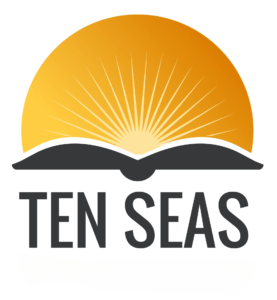
Why is employee education and development a key factor for business success?
Tuesday 22 Oct, 2024
In today’s fast-changing world, companies face challenges that continuously evolve and demand adaptability. In addition to providing a quality product or service, it is essential to have the ability to respond to a shifting market, new technologies, and employee expectations. How can companies manage these changes while maintaining competitiveness? The key is investing in employee education and development. This article focuses on how quality education contributes to the long-term success of an organization.

Case Study: Successful Use of DISC Testing to Improve Team Collaboration
Thursday 12 Dec 2024
A company in the IT distribution and technology solutions sector, known for its global presence and wide range of products and services aimed at ensuring IT infrastructure for a broad spectrum of clients, faced challenges related to the increasing complexity of teams and diverse work styles. Although individual professionals exhibited a high level of expertise, communication between departments and varied work approaches hindered effective collaboration.

Case Study: Statistical Outputs of the Leadership MasterClass Program
Wednesday 18Dec 2024
Leadership MasterClass – Yellow Belt is a four-day intensive training program designed for managers, focusing on the development of key leadership skills. This program was implemented in a medium-sized manufacturing company specializing in mechanical seals and equipment for industrial applications. The company employs approximately 500 people and has a global presence with manufacturing plants in several countries. It faced challenges related to low employee motivation, insufficient task delegation, ineffective coaching, and weak communication between managers and their teams.
Why is employee education and development a key factor for business success?
Why is employee education and development a key factor for business success?
Tuesday 22 Oct 2024
Goals:
In today’s fast-changing world, companies face challenges that continuously evolve and demand adaptability. In addition to providing a quality product or service, it is essential to have the ability to respond to a shifting market, new technologies, and employee expectations. How can companies manage these changes while maintaining competitiveness? The key is investing in employee education and development. This article focuses on how quality education contributes to the long-term success of an organization.
How does education give companies a competitive edge?
Investing in employee development has a direct impact on organizational performance. Here are the key reasons why education is essential for a company’s success:
- Increased productivity and efficiency – When employees have access to relevant training, they acquire new skills and knowledge that they can immediately apply in their daily work. According to McKinsey research, companies that invest in employee development can see a 30% increase in productivity due to higher work efficiency and better service quality. The skills gained help streamline processes and minimize errors, leading to better results and faster task completion.
- Employee motivation and satisfaction – Companies that actively support the personal and professional growth of their employees increase engagement and satisfaction. According to a Gallup study, employees who receive opportunities for continuous learning and development are 34% more likely to be engaged and loyal to their organization. This approach not only boosts motivation but also ensures lower turnover, which is highly cost-effective for organizations in the long run.
- Preparation for change – In today’s world, market changes occur rapidly. Technological innovations, digitalization, and economic shifts constantly alter the nature of job roles. According to a WEF analysis, up to 54% of all employees will need new skills by 2025 to perform their jobs effectively. Companies that invest in education are better prepared for these changes. Continuous training ensures that employees will have the necessary knowledge to adapt to new technologies and processes.
- Innovation and growth – Training and employee development stimulate creativity and innovation. Educated employees are often the ones who bring new ideas and creative approaches to problem-solving. According to research from PwC, 72% of business leaders believe that employee education is key to fostering innovation. This process helps companies stay ahead of the competition and ensure long-term growth. Moreover, developing innovation skills can lead to new products, services, or optimized processes, directly contributing to company growth.
What are the concrete benefits for the company?
Investing in employee development not only increases productivity and motivation but also brings financial advantages. According to a Harvard Business Review study, companies that invest in training can increase their profits by up to 24% compared to those that don’t. Another important factor is the ability to attract and retain talented employees. Companies that offer growth opportunities often become employers of choice.
Education as a strategic investment
Employee education and development is not just a cost but a strategic investment that brings long-term benefits. Companies that focus on developing their teams are better equipped to face changes, innovate, and achieve better results. In a time when flexibility and adaptability are key to market survival, investment in human resources becomes a necessity. Creating a culture of continuous learning not only enhances employee satisfaction but also strengthens the competitiveness of the entire organization.
We would be happy to help you achieve your goals.
Feel free to contact us. Your team at TenSeas Consulting.
Case Study: Successful Use of DISC Testing to Improve Team Collaboration
Case Study: Successful Use of DISC Testing to Improve Team Collaboration
Thursday 12 Dec 2024
A company in the IT distribution and technology solutions sector, known for its global presence and wide range of products and services aimed at ensuring IT infrastructure for a broad spectrum of clients, faced challenges related to the increasing complexity of teams and diverse work styles. Although individual professionals exhibited a high level of expertise, communication between departments and varied work approaches hindered effective collaboration.
The company’s leadership decided to implement DISC testing for 34 employees in three groups, ranging from individual employees to middle management, to foster a deeper understanding of individual work styles and team collaboration approaches. Based on the test results, a developmental workshop focused on improving team dynamics and communication between individuals in different company divisions followed. The program was led by our officially certified consultant in administering and interpreting DISC psychometric testing.
Program Goal
The aim was to help employees improve the following areas:
- Enhance communication between individuals and teams.
- Increase mutual understanding of work styles and preferences.
- Foster a culture of mutual respect, trust, and open communication.
- Improve overall team effectiveness by developing individual skills.
DISC Testing Implementation
The DISC methodology, which evaluates four basic work preference styles and their combinations: Dominance (D), Influence (I), Steadiness (S), and Conscientiousness (C), was implemented for all employees. All participants completed online testing to gain insight into their work styles. The key value of understanding and applying the test results lay in a subsequent one-day development workshop, where DISC results were interpreted and used to practically adjust behaviors and improve collaboration among team members.
Team Development Workshop
During the one-day team development workshop, individual DISC profiles were analyzed in the context of team dynamics and communication. The workshop focused on:
- Self-awareness and understanding of work styles: Participants reviewed their DISC test results and identified their strengths and areas for improvement in team collaboration.
- Communication strategies for different DISC types: Various approaches to effective communication were discussed, along with how to adapt communication styles to different types of people in the team.
- Role-playing and simulations: Participants engaged in practical scenarios that simulated communication and decision-making challenges to practice new skills and approaches.
- Team collaboration and feedback sharing: This segment helped participants apply learned strategies to real-life situations and foster a culture of open communication.
Results and Impact
Four months after the DISC testing and participation in the team development workshop, the company observed several significant changes. The following metrics were recommended by our certified consultant:
Improved Team Collaboration: Thanks to a better understanding of behavior patterns and work preferences, communication patterns among team members improved significantly. The company saw a ~30% increase in team productivity, measured through regular managerial feedback and team performance evaluations during monthly reports.
Faster Decision-Making: As a result of better communication and understanding of work styles, decision-making processes accelerated. ~70% of participants reported that newly applied communication strategies led to faster consensus during team meetings. This result was confirmed through regular monitoring of time data for completing decision-making cycles within a selected group of 10 managers from the 34 trained individuals.
Reduced Conflicts: Conflicts arising from different work styles were significantly reduced. More than 91% (31 out of 34) participants reported that thanks to the DISC workshop, they learned how to better manage conflicts and communicate effectively with people who have different work styles. The measurement was conducted on the trained group four months after the workshop through internal anonymous HR surveys focused on assessing the occurrence and resolution of conflicts during regular team meetings.
Higher Engagement and Satisfaction: Improved communication patterns led to increased employee engagement. 79.5% (27 out of 34) participants felt more connected to their team and more motivated to work on common goals. This trend was tracked through an anonymous internal satisfaction survey among the target group (employees and managers), showing a 12% increase in employee satisfaction scores.
Long-Term Benefits and Future Steps
The implementation of DISC testing and the subsequent team development workshop proved to be effective tools for improving communication, collaboration, and team dynamics. This process led to a better understanding of individual work styles, improved interactions among team members, and positive changes in team culture. The initiative contributed not only to better productivity but also to greater employee satisfaction and motivation.
Based on the success of this training, the client decided to involve an additional 120 people across ten groups in DISC testing and the subsequent workshop in 2025 to expand these positive changes throughout the entire organization.
Case Study: Statistical Outputs of the Leadership MasterClass Program
Case Study: Statistical Outputs of the Leadership MasterClass Program
Wednesday 18 Dec 2024
Program Leadership MasterClass – Yellow Belt is a four-day intensive training program designed for managers, focusing on the development of key leadership skills. This program was implemented in a medium-sized manufacturing company specializing in mechanical seals and equipment for industrial applications. The company employs approximately 500 people and has a global presence with manufacturing plants in several countries. It faced challenges related to low employee motivation, insufficient task delegation, ineffective coaching, and weak communication between managers and their teams. At the time of the first wave of the training, the company had 82 managers, ranging from team leaders to top management. The first wave was attended by 24 managers, divided into two groups of 12 participants each.
Program Objective
The goal of the program was to help managers develop skills that are essential for effective team leadership and to improve the company’s overall performance. The program focused on the following areas:
Foundations of Situational Leadership and Employee Motivation – Helping managers recognize different situational contexts and adapt their leadership style to the current needs and motivation levels of their employees.
Setting Goals, Monitoring, and Providing Feedback – Equipping managers with tools for effectively setting achievable goals and providing regular feedback to ensure higher performance.
Coaching Using the GROW Model – Teaching managers how to use coaching techniques to support employees’ personal development and help them achieve their professional goals.
Building and Strengthening Trust and Delegating Tasks – Strengthening managers’ skills in building trust within their teams and effectively delegating tasks, leading to increased engagement and accountability in teams.
Measurement Methodology
The program’s effectiveness was measured using a combination of several tools that provided concrete data and feedback. These tools included:
Pre- and Post-Program Surveys: Managers completed surveys before and after the program, which assessed their abilities in areas such as employee motivation, delegation, communication, and feedback provision. The surveys also included self-assessment questions regarding managerial skills, allowing for comparison of changes in their approach to these skills.
360° Feedback: Managers received feedback from their subordinates, peers, and supervisors, both before the program and six months after its completion. This comparison provided a comprehensive view of improvements in communication, leadership style, delegation, and the ability to provide constructive feedback.
Performance Indicators: Employee performance was measured through an analysis of metrics related to productivity, work quality, and employee turnover. The level of team goal achievement, task delegation efficiency, and team motivation were monitored.
Results
Three months (or six months for 360° feedback) after completing the program, the following specific changes were observed:
Productivity and Efficiency: Results showed a ~13% increase in productivity, reflected in metrics such as a reduction in defective products and shortened production cycles. This progress was evaluated through data analysis of individual team performance and their ability to meet production schedules on time. This indicator is, of course, influenced by other factors as well.
Task Delegation: The level of task delegation increased by ~18%. This was measured through internal team analysis, where managers recorded the number of delegated tasks and tracked their completion. Improved delegation contributed to a more balanced distribution of responsibilities and better team management of daily tasks.
Employee Motivation: Based on pre- and post-program surveys and 360° feedback, employee motivation increased by ~16%. This improvement was also supported by increased employee engagement, measured through regular internal satisfaction surveys and analysis of participation in company initiatives.
Feedback and Communication: The effectiveness of feedback improved by ~20%. This indicator was evaluated based on regular feedback from employees and managers, who assessed how well managers conducted regular meetings, provided constructive criticism, and recognized achievements.
Trust and Team Collaboration: There was a significant improvement in trust between managers and their subordinates. Based on 360° feedback, the level of trust increased by ~14%, which resulted in greater openness among employees and better team collaboration. Employee turnover among managers who participated in the program decreased by 16% (measured six months after the training).
Next Steps and Long-Term Plan
Due to these positive changes and improved performance, the company’s leadership decided to continue the Leadership MasterClass Yellow Belt program for the remaining managers, including top management. Additionally, those who have already completed the Yellow Belt program will advance to the Black Belt program.

